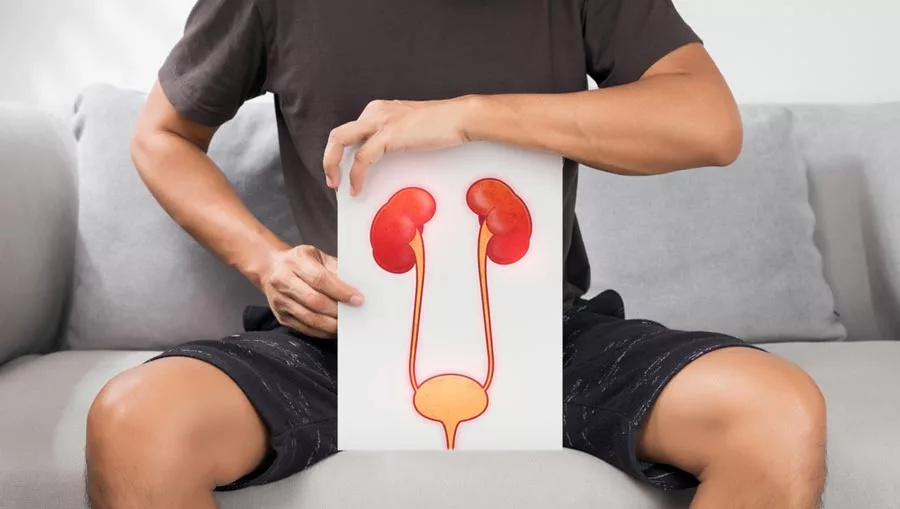The Risks of Regular Ketamine Consumption on Bladder Health
Recently, the therapeutic value of ketamine has attracted positive attention from various medical venues because of its potential to act as a powerful remedy for depression, anxiety, bipolar disorder, and more mental and physical ailments. For some, ketamine has provided relief after all other treatment options have failed.
In the past, ketamine has been, and continues to be, one of the most popular street drugs around the rave and nightclub scene. Since the 1980s partygoers have abused this drug, also known as Special K, or simply just “K.” Beyond the use of this disassociative anesthetic lies a concerning and lesser-known side effect – the severe condition known as “ketamine bladder.”
If you or someone you know is overusing ketamine or suffering from ketamine abuse, it’s important to seek assistance right away before they develop lower urinary tract symptoms leading to ketamine cystitis. Effective treatment centers can help manage the harmful impact of short and long-term ketamine abuse.
For additional information regarding ketamine abuse and urinary symptoms, we suggest reading this article in its entirety – and then contacting South Shores Detox & Recovery for more information and treatment options.
What Is Ketamine?
Originally developed as an anesthetic in the 1960s, this dissociative drug has had an interesting journey through the medical and veterinary industry and into the club drug scene, and now, most recently, as a treatment option for mental and physical health disorders.
Ketamine has its roots in the laboratories of Parke-Davis, where it was first synthesized by scientist Calvin Stevens in 1962. Initially recognized for its potent anesthetic properties, ketamine quickly found its place on the surgical stage, becoming a staple for both human and veterinary procedures. Its ability to induce dissociation while maintaining respiratory function made it a groundbreaking alternative to other anesthetics of the time.
Although ketamine is not an opioid, it does still have qualities that can become addictive.
From the Surgical Floor to the Dance Floor
Beyond the operating table, ketamine segued into a popular club drug thanks to its visual and auditory properties. Users who engage in the use of ketamine slip into what’s known as a “K-Hole,” or a severe disassociated state that can lead to dangerous side effects.
The more recent development in the world of ketamine has been an explosion in popularity as a mental and physical health remedy when all other drugs have failed.
Ketamine Infusion Therapy and Ketamine Bladder
Ketamine has been stepping into the realm of psychiatric medicine in recent years. Its use in treating mood disorders and even ketamine usage for chronic pain has produced mixed results, with a large portion of clients experiencing at least some level of relief. Clinics offering ketamine infusion sessions have sprung up across the United States.
However, this increase in clinics and open-door policy regarding patient acceptance could potentially start a serious increase in lower urinary tract symptoms, leading to an extremely dangerous condition known as ketamine cystitis.
Knowing the Short Term Concerns of Ketamine Abuse

Those who abuse ketamine illegally face several harsh side effects. There are multiple short-term implications as a result of administering ketamine on your own to obtain a high:
- Shallow breathing
- Disorientation
- Disassociation
- Increased blood pressure
Many users may be aware of these short-term risks. In the case of ketamine infusions, many of these risks are mitigated through the administration by a medical professional. That said, there is a far more sinister risk after prolonged ketamine abuse of any kind – illegal or otherwise. In the next section, we’ll highlight what is potentially the number one risk of prolonged ketamine use.
Ketamine Abuse and Ketamine Cystitis
Ketamine-induced bladder dysfunction is quickly becoming one of the more serious, negative impacts for ketamine users, and even those who engage in ketamine use for its therapeutic properties.
Beginning with bladder pain, ketamine-induced ulcerative cystitis can quickly become a life-threatening condition if not treated.
An Overview of the Bladder
Your bladder is a round-shaped organ that rests behind the pelvic bone and holds all the urine the body creates. It’s about the size of a softball but can stretch to much larger sizes when it’s full. The average person can safely fill the bladder with about two cups of urine. When you need to empty the bladder, the muscles become tighter, allowing the urine to expel from your body.
The kidneys filter your blood and remove items like water, salt, and other waste through your urine. As the bladder becomes full of urine, it quickly expands, sending nerve signals that tell your brain it’s time to go. As urine exits the bladder, it shrinks back down to its original size.
Ketamine Use and Ketamine Associated Cystitis

Your upper urinary tract is a key point for the passage of ketamine through your system. As the metabolites (leftovers from ketamine) enter the bladder, the epithelial cells in your bladder become damaged. These are the cells that line the inside of the bladder.
Their design allows them to hold the urine inside your bladder, shaping the bladder capacity. However, as the damage continues, urine leaks through to the inner bladder layers, causing extreme damage.
What are the Initial Symptoms of Ketamine Bladder Damage?
The initial symptoms of ketamine-associated ulcerative cystitis include
- Frequent urination
- The feeling of needing to constantly use the restroom
- Having to go suddenly (emergencies)
- Feeling the need to go despite the bladder being empty
- Erectile disfunction in men k
If these symptoms aren’t treated, the condition worsens and you may experience the inability to hold your urine. There’s also a chance you notice urine in the blood, as the capacity for urine shrinks in your bladder wall. It becomes rigid, loses its flexibility, and ultimately, can fail.
Can Ketamine Damage Other Organs In My Body?
The extended use of ketamine will ultimately damage your gallbladder, which contains the same type of cells as the bladder. The most important thing to worry about is the amount and frequency in which one is using ketamine. Ketamine use should be kept to a minimum and never used as a recreational drug.
It’s possible that even therapeutic ketamine use leads to issues with the upper urinary tract and moves to the lower urinary tract as time goes on. It’s not only recreational ketamine use that causes this condition.
More people engaging in ketamine infusion or taking daily ketamine dosage (such as with mail-order ketamine troches) have reported adverse effects after extended periods of use. The prevalence and natural history of ketamine infusion are important. Ultimately, it seems difficult to avoid bladder issues, even if only used recreationally.
The challenges that come with ketamine infusion are the subsequent treatments required, otherwise known as “booster doses.” These are additional administrations that take place after an initial therapy session with ketamine to ensure it maintains its effectiveness against your specific condition.
Should I Be Concerned About Ketamine Induced Cystitis?

There is only one surefire way to eliminate concern for ketamine-induced cystitis– and that’s to refrain from use altogether. It’s possible that ketamine treatment can still be administered at safe levels, but for now, it’s difficult to say just how much is a safe dosage, and how often these doses should be administered. There isn’t enough clinical evidence to deliver any proof one way or the other.
The assumption is that at therapeutic levels, the risk of this condition is low. Even though dosage levels are monitored by a medical team, there still isn’t sufficient evidence to say with confidence whether these long-term booster shots are 100% safe.
With the growing availability of mail-order ketamine troches (lozenges that contain up to 120 mg of ketamine hydrochloride) and poorly supervised prescribing, even more people are at risk.
What we do know for sure is that intense, heavy use puts you at extreme risk of damaging the bladder. Recreational ketamine users are probably at the highest risk. However, if you’re using ketamine therapy to combat depression, anxiety, and other disorders – there are much safer ways to find relief for these symptoms.
Providing the Tools to Overcome Self-Medication with Ketamine
Why should you look toward South Shores Detox and Recovery for help with ketamine use? First, we offer a robust treatment program to help those who are dealing with severe ketamine addiction. Our team of professionals is standing by to assist with the most up-to-date forms of behavioral and holistic therapies in a stable, positive environment.
Alternatively, we can help you treat your anxiety and depression challenges as an alternative to ketamine induction therapy. There’s no need to take the risk of experiencing bladder pain or putting your health at risk by entering any type of treatment blindly.
South Shores Detox: Get Holistic Help for Ketamine Today
Whether you’re a long-term ketamine user or someone who’s just started dabbling in ketamine and beginning to feel pain in your bladder, South Shores Detox and Recovery has the answers you’re looking for.
With assistance and our support, along with your willingness, we can craft a specialized treatment program that focuses solely on the source of your challenges, allowing us to treat the issue properly from the start as opposed to a long, tiring trial and error process.
For more information about admissions, contact a member of our team today!

